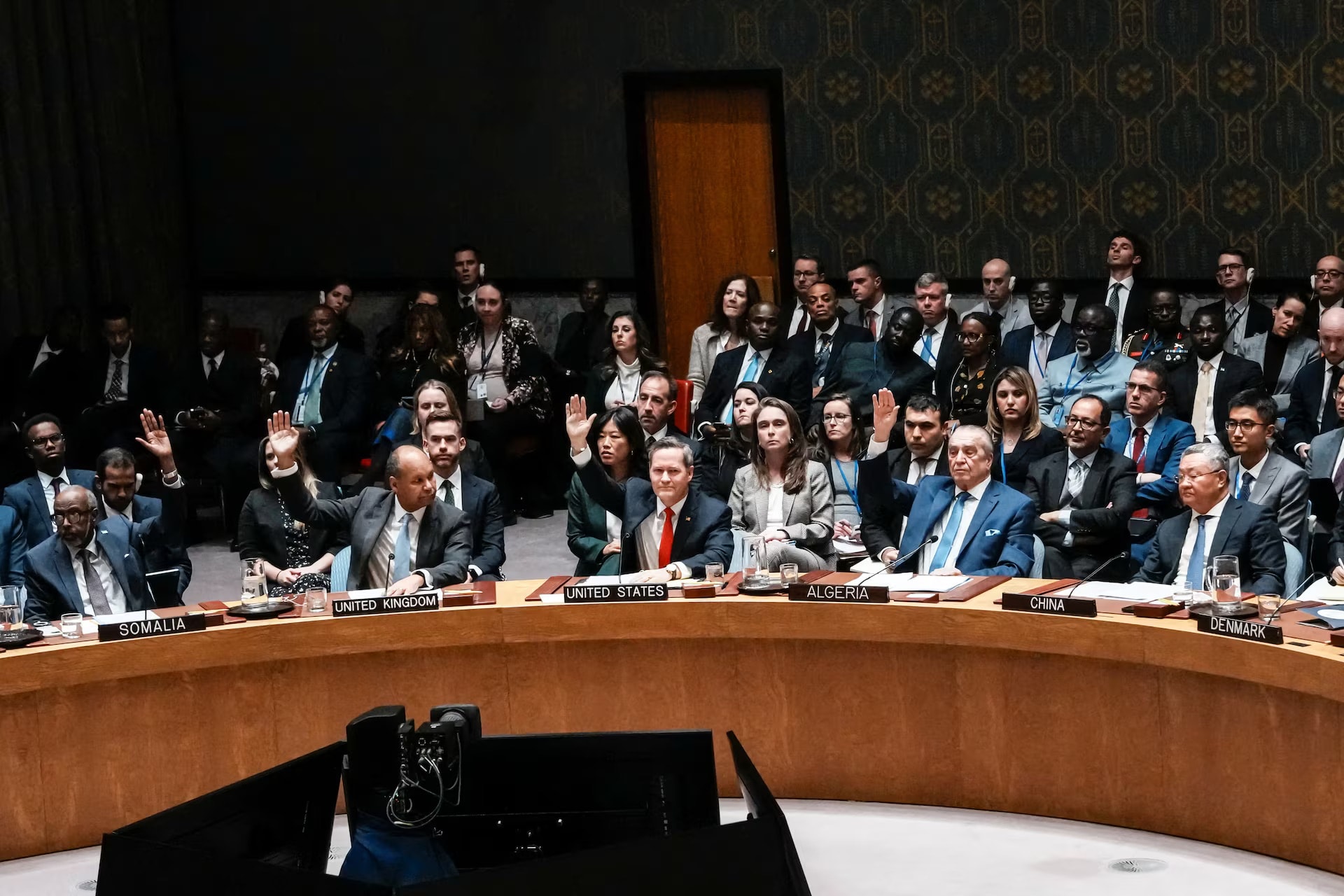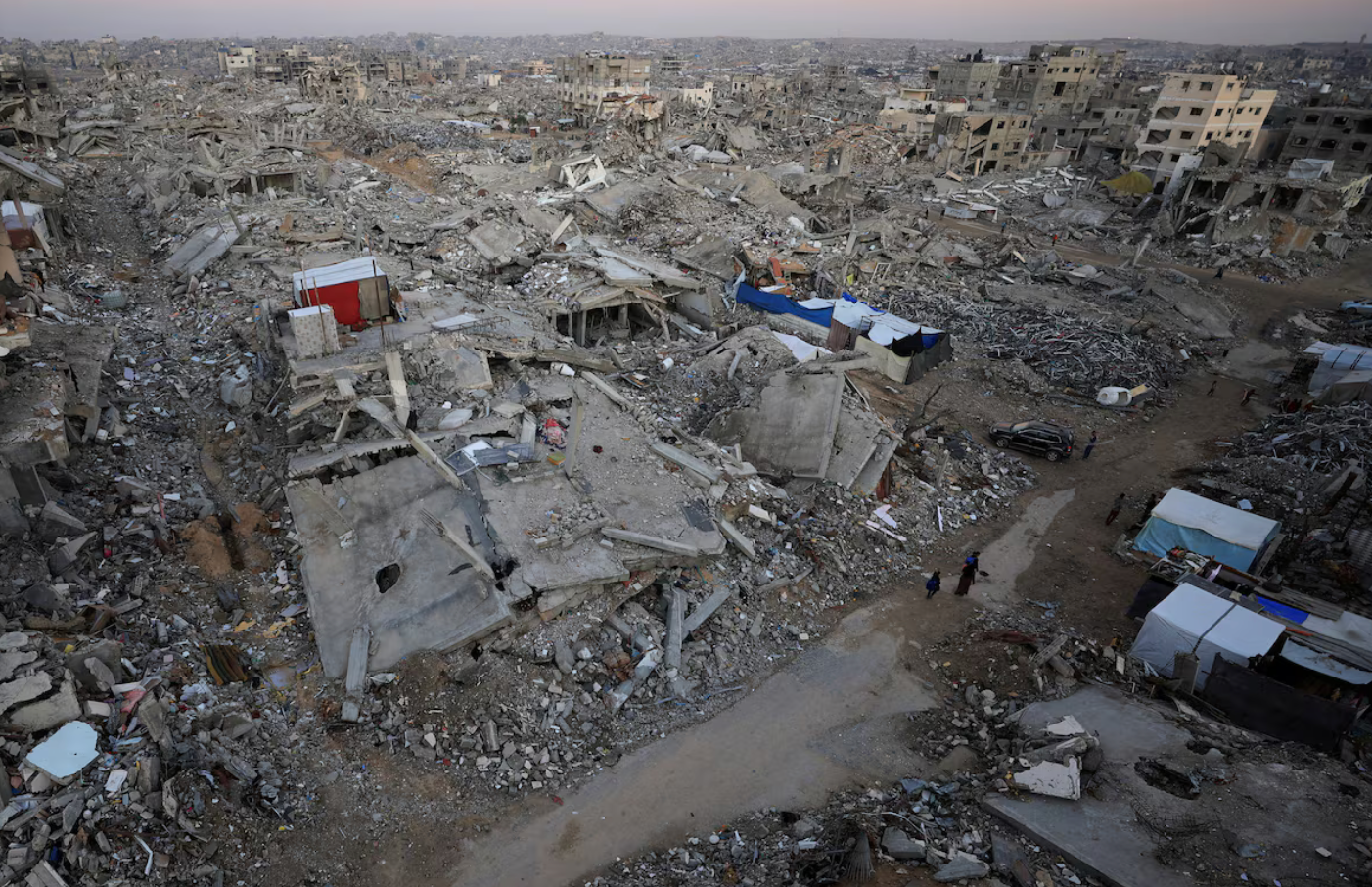"New dawn" dawning in Gaza?
On November 17, the United Nations Security Council adopted a historic US-drafted resolution formally endorsing President Donald Trump's 20-point peace plan to end the war in Gaza.
The resolution, which legitimizes the establishment of a transitional governing body and authorizes the deployment of the International Stabilization Force (ISF) in the devastated Palestinian territories, is seen as a significant milestone, opening a “possible path” towards self-determination and the establishment of a Palestinian state, while also posing major challenges to the parties involved, especially Hamas.
Legalizing the post-war transition mechanism

After nearly two weeks of intense negotiations, Security Council Resolution 2803 (2025) was adopted with 13 votes in favor, no votes against, and two abstentions from two permanent members, Russia and China, according to news agencies. This result reflects a fairly broad international consensus, including support from important Arab and Muslim countries, for a post-war stability framework. The US resolution focuses on restoring order and rebuilding Gaza after two years of fighting between Israel and Hamas through two main mechanisms. First, the resolution welcomes the establishment of the Board of Peace (BoP) as a transitional governing body headed by US President Donald Trump. The BoP will be tasked with coordinating and overseeing reconstruction and economic recovery efforts in Gaza. Second, the resolution authorizes the BoP to establish and deploy the International Stabilization Force (ISF) under a unified command. This is the most crucial and controversial point. The ISF is tasked with ensuring security, supporting the demilitarization of Gaza through the disarming and destruction of military infrastructure of non-state armed groups, and maintaining the safety of Palestinian civilians. The mandate of the BoP and the ISF ends on December 31, 2027.
President Trump's 20-point peace plan is seen as the foundation, with phase one leading to a ceasefire and hostage exchange between Israel and Hamas last month. The Security Council resolution is essential to legitimizing the transitional governing structure and reassuring countries considering sending troops to the ISF. US Ambassador to the UN Mike Waltz said the resolution "lays out a possible path for Palestinian self-determination... where rockets will give way to olive branches", stressing that it will "dismantle Hamas's stranglehold, ensuring Gaza emerges from the shadow of terror, prosperous and safe".
The arduous road to a Palestinian state

The US resolution also mentioned a key but politically sensitive point: the prospect of a Palestinian state. The resolution text stated that “conditions can finally be established for a credible path to self-determination and the establishment of a Palestinian state” after the Palestinian Authority (PA) completes its reform program and Gaza reconstruction progresses. This added language, although without a specific timeframe, is a diplomatic victory for Arab and Palestinian states and a basis for future dialogue between the US, Israel and Palestine to “agree on a political horizon for peaceful and prosperous coexistence.” The PA’s statement welcoming and willing to participate in implementing the resolution was also key to preventing a Russian veto. However, even within Israel, the resolution has been controversial for mentioning this possibility. Prime Minister Benjamin Netanyahu, under pressure from right-wing members of his government, reiterated his opposition to a Palestinian state and pledged to demilitarize Gaza. Meanwhile, the militant group Hamas issued a statement rejecting the resolution outright, saying it did not meet the rights and demands of the Palestinian people and "imposes an international guardianship on the Gaza Strip." More importantly, the group reiterated that it would not disarm, considering its fight against Israel as legitimate resistance. Hamas warned that assigning an international force to the task of disarming would "deprive it of its neutrality and turn it into a party to the conflict in the interests of the occupying party," creating the risk of direct confrontation between the ISF and Hamas.
Russia and China's abstentions were key to the resolution's passage, but both powers expressed deep concern. Russian Ambassador Vasily Nebenzya complained that the resolution "does not provide a clear role for the United Nations in Gaza's future." He said the Security Council was essentially "blessing an American initiative based on Washington's promises," handing over full control to the BoP and ISF, "the modalities of which we still know nothing about." The Chinese ambassador shared similar concerns, describing the resolution as "insufficient in many respects and deeply worrying," "vague and unclear on many important elements." He said that "Palestine is barely present in it, and Palestinian sovereignty and mastery are not fully reflected." Despite acknowledging support from Arab and Muslim countries, Russia and China maintained that the resolution did not fully ensure the role of the United Nations and did not strongly support the state of Palestine.
Test for the feasibility of ISF

Many observers say the biggest challenge lies in implementing the demilitarization mandate. The US plan requires the ISF to ensure “permanent disarmament from non-state armed groups.” With Hamas firmly opposed, the ISF is empowered to “use all necessary means to carry out its mandate” in accordance with international law – diplomatic language that allows the use of military force. The ISF’s role will include: Protecting the border, coordinating with a trained Palestinian police force; coordinating with neighboring countries to ensure the flow of humanitarian aid; and providing a basis for the Israeli withdrawal from Gaza “based on standards, milestones and timeframes associated with demilitarization.”
The Security Council resolution thus provides an international legal and political basis for the US peace plan. However, its feasibility will depend on the BoP’s ability to coordinate reconstruction and transition management, as well as the ISF’s ability to maintain security and implement demilitarization without becoming bogged down in a proxy war with Hamas. The mandate’s end-2027 deadline sets a specific but pressing timeframe for the peace process. If successful, the resolution will be a historic legacy. If it fails, it could plunge the Middle East into a new cycle of instability, demonstrating the complexity and unpredictability of the decades-long conflict…
